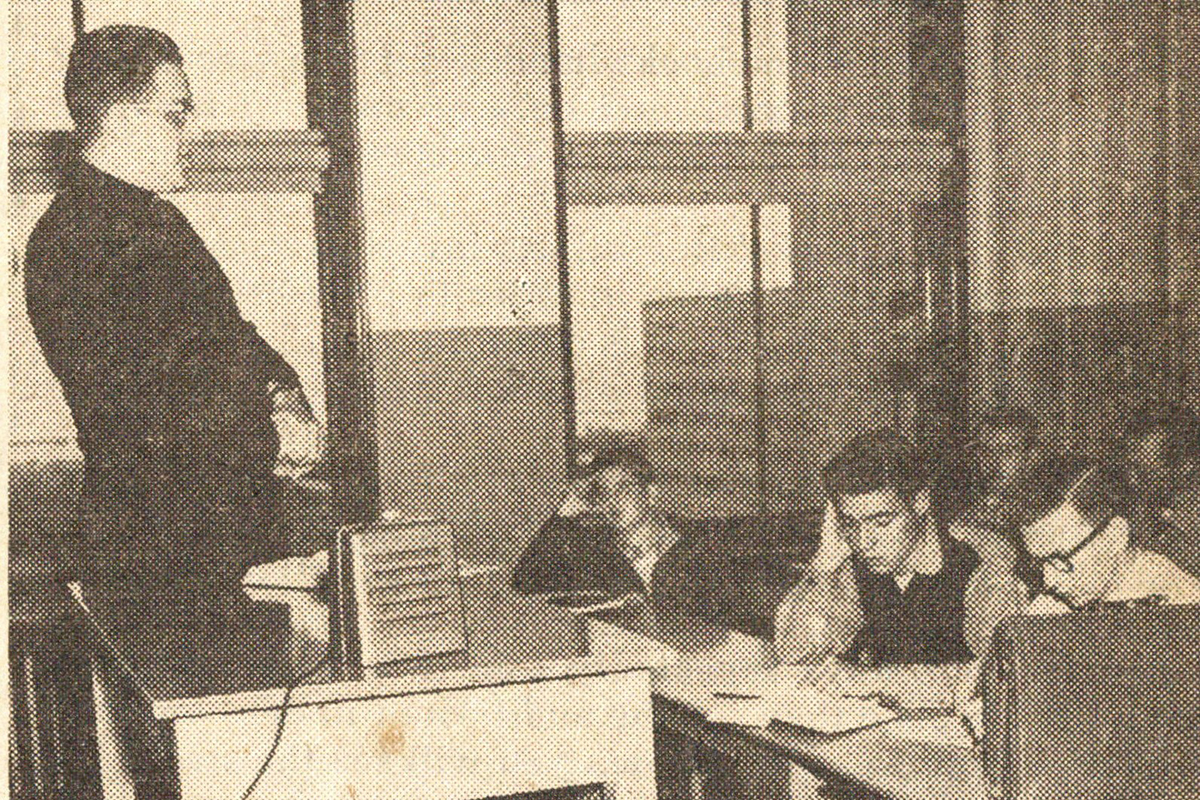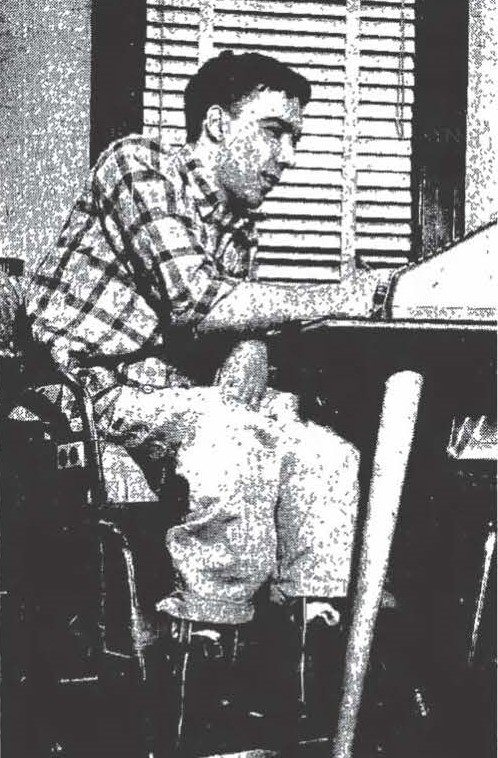 A 1956 DePaul classroom equipped with the portable speaker unit, with Fiori on the other line listening to a philosophy lecture. (Image courtesy of Special Collections and Archives)
A 1956 DePaul classroom equipped with the portable speaker unit, with Fiori on the other line listening to a philosophy lecture. (Image courtesy of Special Collections and Archives)
 Edward Fiori, Jr., working on his DePaul education remotely in his East Chicago bedroom in 1958. (Image courtesy of Special Collections and Archives)
Edward Fiori, Jr., working on his DePaul education remotely in his East Chicago bedroom in 1958. (Image courtesy of Special Collections and Archives)
Long before DePaul shifted classes online this quarter due to the COVID-19 pandemic, the university was leading the way in remote instruction. In 1958, DePaul awarded one of the nation's first “online" degrees to Edward J. Fiori, Jr., a student who attended all of his classes remotely. While the technology of online classes in the 1950s might have been a little different, there are a number of parallels between this early instance of remote instruction and the experience of online learning at DePaul today.
Fiori was an undergraduate student in DePaul's College of Commerce who attended classes remotely from his family's home in East Chicago, Indiana from 1956-58. At the time, it was another viral outbreak—a polio epidemic—that was the impetus for Fiori's remote education. He was left paralyzed from the waist down after he contracted the disease at the age of 12.
The technology that allowed Fiori to receive his education remotely was a telephone line that hooked up to a portable unit with a speaker and microphone. Fiori had a unit in his bedroom at home, and a similar unit was connected in a DePaul classroom. With this bedroom to classroom telephone line, Fiori was able to listen in on lectures and discussion. Whenever he needed to ask or answer questions, or participate in discussions, he simply hit a button to switch from listen to talk mode. He took his exams remotely by mail or orally with the instructor, whispering his answers over the phone line while the rest of the class worked in-person on paper.
DePaul students taking classes remotely today might relate to some of the advantages of distance learning Fiori identified, such as staying up late and attending early morning classes in pajamas and enjoying a sandwich while in class. He and his classmates also found ways to engage in remote antics and humor. In one example, a fellow student introduced Fiori before a management class presentation as an executive at General Motors, too busy to appear in class in person.
After successfully completing a regular course load of management, taxation, accounting, speech, logic and philosophy, Fiori received his Bachelor of Science degree in Commerce in person, becoming only the third person in the United States to earn an undergraduate degree entirely from home. Fiori continued his remote learning after graduation, earning a law degree from John Marshall Law School via the same bedroom to classroom telephone line setup.
Fiori's story is unique as one of the earlier examples of remote learning in the country and at DePaul. It also demonstrates the university's collective and long-standing commitment to serving students and prioritizing learning and instruction, whether on campus or online.